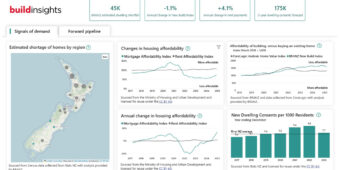Workplace bullying – part 2
25 Jan 2024, Learn, Legal, Prove Your Know How

Part 1 of this series of articles looked at when WorkSafe New Zealand should intervene when an allegation of workplace bullying is raised. In this article, we explore in more detail the widespread effects of bullying and the challenges of regulation and intervention
The WorkSafe ‘New Zealand National Psychosocial Survey 2021: Overview’1 explored worker exposure to offensive behaviours, specifically:
- Bullying.
- Cyberbullying.
- Sexual harassment.
- Threats of violence.
- Physical violence.
The results show that over one-third of workers report being exposed to at least one of the five offensive behaviours in the previous 12 months. This is consistent with statistics reported over recent years by the Massey University Workplace Barometer study2, the Human Rights Commission3, Diversity Works4 and others.
‘Exposure’ in this case refers to either direct experience or witnessing it occurring to others. While some offensive behaviours are more common in certain industries, it does appear that each of the offensive behaviours is experienced across all sectors. All behaviours, except for bullying, were more commonly experienced by younger workers and all behaviours were experienced more by Māori workers.
During the period between 1 July 2021 and 30 June 2022, the Kaimahi Hauora team received 153 mentally healthy work notifications. A majority of these related to bullying (118 notifications — 77%) and the remainder related to other concerns — eg, work stress and fatigue (35 notifications — 23%).
Data from WorkSafe’s 2020 Segmentation and insights program: Employers and workers5 is consistent with other extant data that shows approximately 15% of workers5 (about 430,000 individuals) report an experience of bullying in any 12-month period. These are estimates based on self-reported data, which can often yield an overestimate. However, if even a small portion of these meet WorkSafe’s widely accepted definition of (experiencing) bullying, this would equate to many thousands of workers each year.
Challenges of regulation and intervention
An issue of this magnitude cannot easily be resolved one case at a time. High-level prevention programmes addressing the reasons why some people bully are needed, as well as the implementation of systems for early/transparent reporting and resolution.
As in all areas of health and safety, instead of waiting for the harm to happen before we act, we must design and put into effect work systems which address the contextual factors which can lead to bullying.
In most cases, WorkSafe will expect that, prior to any notification, the worker has attempted to resolve their difficulties within the workplace by talking with a senior colleague, manager, Health and Safety Representative (HSR), or by using existing resolution channels.
Where issues arise from employment or contractual matters — eg, disagreements primarily based around working hours, fulfilment of work contract commitments, etc — or where the solution to a problem may rest within the employment contract domain, WorkSafe will usually advise the parties to seek support from the appropriate agency — usually the Ministry of Business, Innovation and Employment (MBIE) — or another source of mediation support.
Sometimes it can be unclear whether the origins and resolution of an issue rest within the realm of People and Culture (Human Resources) or Health and Safety because there are elements of both, and successful assessment and resolution can involve an ability to bridge both domains.
Of course, it is also acknowledged that it is not always possible, or even advisable, for a worker to make attempts to resolve difficulties using established workplace processes, especially if they are poorly designed or implemented.
Summary
The mental health of workers is not a new consideration within our work health and safety framework; notwithstanding this fact, it has not previously been afforded the attention it is receiving at the present time.
It is possible that the Covid-19 pandemic and exhortations to be kind and “look after each other” may have focused our attention on the occasions when we are not kind to our fellow workers. High (media) profile cases of unacceptable behaviour in some workplaces may also have led to recognition that psychosocial hazards are present in all workplaces, and harm is present in most.
Now we have the data and insights about when and where the risks exist, we need to focus on building interventions that both support businesses to operate and be productive, while also prioritising the safety and health, including mental health, of all workers.
1. Supporting mentally healthy work (WorkSafe, Position Statement, September 2020) worksafe.govt.nz/dmsdocument/32324- worksafe-position-on-supporting-mentally-healthy-work/latest .
2. “New Zealand Psychosocial Survey 2021: Overview” (Research, WorkSafe, June 2022) worksafe.govt.nz/dmsdocument/51481- new-zealand-psychosocial-survey-2021/latest .
3. Darryl Forsyth and others The New Zealand Workplace Barometer: Psychosocial safety climate and worker health — findings from the 2020 NZ Workplace Barometer (Healthy Work Group and Massey University, Report, June 2021) .
4. “Experiences of Workplace Bullying and Harassment in Aotearoa New Zealand” (Research, New Zealand Human Rights Commission, 2022) tikatangata.org.nz/cms/assets/Documents/Experiences-of-Workplace-Bullying-and-Harassment-in-Aotearoa-New-Zealand.pdf .
5. New Zealand Workplace Diversity Survey 2021 (Diversity Works, 2021) diversityworksnz.org.nz/media/4750/0521-diversitysurvey-report-final.pdf .
If you have any questions about this Bill, or about the retention money scheme generally, please contact a member of our Construction & Projects team (duncancotterill.com).
Duncan Cotterill is a full-service law firm with offices in Auckland, Wellington, Nelson, Queenstown and Christchurch.
Disclaimer: the content of this article is general in nature and not intended as a substitute for specific professional advice on any matter and should not be relied upon for that purpose.
Register to earn LBP Points Sign in
4 Comments
Leave a Reply
You must be logged in to post a comment.




good
Thanks
have not experienced this
Don’t really see this behavior in residential, but I have seen it in the commercial sector years ago.